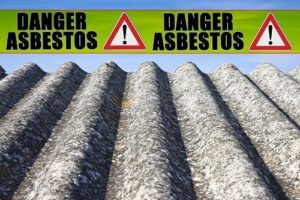




Decades after asbestos exposure, deadly diseases like mesothelioma lung cancer and asbestosis can strike. Perhaps what’s most tragic is how often mesothelioma affects veterans and longtime workers in some of the most demanding occupations. For years, these hardworking Americans braved difficult working conditions to provide for their families. They never knew that their work put them at risk of developing deadly cancer.
You deserve better than being exposed to a known carcinogen by your workplace or losing a family member to a disease caused by asbestos. If you or a loved one developed mesothelioma, you have legal rights. You deserve answers. You deserve justice.
Console and Associates have 25 years of experience handling personal injury claims. Over that time, we’ve worked with law firms across the country, including those that handle mesothelioma asbestos claims. If we cannot handle a claim, our goal is to connect you with an experienced attorney who can. If you developed mesothelioma after being exposed to asbestos, call today. We’ll ask you a few questions so that we can put you in touch with the right attorney.
Both mesothelioma victims and their families can pursue an asbestos lawsuit. You should speak to a mesothelioma attorney if you or your loved one developed:

If you worked in a setting that exposed you to asbestos, your risk could be far higher than you realize. Many mesothelioma patients had no idea that their workplace was exposing them to a carcinogen all this time.
You’re at the greatest risk of developing an asbestos-related disease if you worked as a:
Sometimes the asbestos fibers that put these workers at risk can even be carried home on a worker’s clothing. In this case, the asbestos exposure affects family members of these workers, as well.
Exposure to these carcinogenic fibers is the main cause of mesothelioma, the American Cancer Society reported. Asbestos exposure accounts for about 80 percent of cases of mesothelioma.
If you developed the disease, there’s a good chance that asbestos is to blame. There’s also a good chance that you can pursue an asbestos lawsuit.
Asbestos is a set of silicate minerals or rock-forming minerals that contain silicon compounds. These minerals are found in nature and are made up of long, thin fibers.
There are six asbestos types:
There are two types of asbestos fibers. Serpentine forms of asbestos have curly fibers. Amphibole forms of asbestos have needle-like fibers.
Every kind of asbestos is known to cause cancer in humans.
There are many asbestos uses. Different forms of asbestos serve different purposes.

While asbestos is the most common form of asbestos in the United States. It accounts for close to 95 percent of the asbestos found in buildings in the U.S., the Wisconsin Department of Natural Resources reported. It appears in roofing, ceilings, floors, and walls. You can also find it in items such as fabric, insulation, gaskets, and brake linings.
Brown asbestos and blue asbestos were also used commercially. Ceiling tiles and thermal insulation often contain amosite. Manufacturers used crocidolite to reinforce plastics, make yarns and ropes, and insulate pipes and steam engines.
Actinolite, anthophyllite, and tremolite, on the other hand, were never widely used commercially or industrially. However, the fibers are still dangerous.
The use of asbestos dates back to ancient times. Archeologists have found the fibers in 4,500-year-old artifacts. In the United States, asbestos mining began around 1858. It became more prevalent around the turn of the century.
It may seem hard to imagine that asbestos has been exposing people to cancer-causing fibers for thousands of years. The first documented reports of the fibers harming patient’s health emerged around 1899. In 1906, the first known death resulted from asbestos.
When doctors examined the lungs of workers who died after long-term asbestos exposure, they found scarring and even asbestos in the lungs. Health agencies around the world began to investigate the danger of asbestos.
By the 1930s, the United States, too, was aware of the risk. Or at least, the asbestos industry was. There are court documents to prove it.
Yet for decades, the industry kept this very real danger under wraps. Asbestos was still used in shipbuilding, construction, factories, and other workplaces. Some of the hardest workers and their families were exposed to the carcinogen.
The asbestos industry has since faced backlash for hiding the known dangers of asbestos. To many observers, the U.S. government, too, had failed these workers and their families. When other nations began to ban the use of asbestos, America lagged far behind. All the while, more people suffered asbestos exposure that would damage their lungs for life.
Stopping the use of asbestos was a gradual process in the U.S. It began in the 70s but wasn’t complete until 1990, the Environmental Protection Agency (EPA) reported.
Today, asbestos can’t be used to manufacture the following products in the United States, according to the EPA:
It’s also illegal to distribute or import these products.
However, asbestos can still be legally used in the United States in more than a dozen other products, such as:
This ban only applies to the manufacturing or distribution of new products. Structures built during the decades that predated the ban may still contain asbestos.
If the asbestos materials in these old buildings become damaged, those fibers can still put anyone who breathes them in at risk.
Asbestos fibers have been linked to many health risks. Generally, what’s known is that asbestos causes lung diseases, such as:
Perhaps the most well-known danger of asbestos is cancer. Asbestos is linked to lung cancer, both small cell and non-small cell types. A particular risk of asbestos is mesothelioma, a relatively rare form of cancer.
Another condition closely linked to asbestos exposure is asbestosis. This chronic lung disease can cause shortness of breath as well as other asbestos effects. People who suffer from asbestosis are more likely to go on to develop lung cancer, according to Mayo Clinic.
Having asbestos in the lungs can cause serious damage. Inhaling asbestos fibers may lead to scarring, fluid buildup, inflammation, and the growth of cancerous cells.
It’s not always easy to identify asbestos warning signs. Asbestos fibers are so small that you can’t see them floating in the air you breathe. You may have no idea that you’ve been exposed to this carcinogen.
It can take decades for asbestos exposure to result in symptoms. By the time symptoms of mesothelioma, asbestosis, or another lung condition emerge, the lung disease has already severely harmed the lungs.
Asbestos kills as many as 12,000 to 15,000 Americans per year, according to the EWG Action Fund’s Asbestos Nation campaign. Most asbestos deaths are the result of asbestos lung cancer, mesothelioma, and asbestosis.
Even when your lung damage isn’t deadly, the effect of asbestos on quality of life can be severe. And this damage is often permanent. There’s no cure. Asbestos treatments can only make breathing a little easier.
The consequences of asbestos exposure are serious. That’s why so many asbestos victims are moving forward with lawsuits. They need compensation to afford the best possible treatment or take care of their loved ones.
Most cases related to asbestos result from a diagnosis of mesothelioma. You may be familiar with mesothelioma ads, but you still have a lot of questions.

What is mesothelioma? What causes it? How do mesothelioma doctors diagnose and treat the disease? And when are patients with mesothelioma entitled to financial compensation?
Mesothelioma is a type of cancer, a condition in which cells grow abnormally or out of control. This disease develops in the mesothelium. This is the lining of cells that covers the heart, the abdomen, the inside of the chest, and most of the internal organs.
Mesothelioma is classified in two ways:
Categorized by body part, mesothelioma types include:
Classified by cell arrangement, mesothelioma types include:
Some mesotheliomas are benign or non-cancerous. These conditions are less harmful than cancerous tumors. Benign mesotheliomas include:
However, many types of mesothelioma are cancerous. These conditions are called malignant mesothelioma. They’re the ones that most commonly result in a mesothelioma asbestos lawsuit.
Identifying early mesothelioma symptoms is tricky. It can take 20 to 50 years for the disease to develop after asbestos exposure. Patients typically don’t show symptoms during those decades.
Even once symptoms do develop, those symptoms can be misattributed to other causes. In fact, most patients who eventually receive a mesothelioma diagnosis have symptoms for a few months before the diagnosis, the American Cancer Society reported.
So, which symptoms could indicate mesothelioma?
The most common form of the disease, pleural mesothelioma, causes symptoms such as:
Signs that may indicate that you have the next most common form of mesothelioma, peritoneal mesothelioma, include:
It’s important to see a doctor right away if you develop these symptoms, particularly if you believe you have been exposed to asbestos, even if that exposure occurred years ago.
There are many differences between mesothelioma and asbestosis. Both result from inhaling asbestos fibers and can cause serious effects on your health. However, unlike mesothelioma, asbestosis isn’t cancer.
Still, patients who have asbestosis are more likely to develop mesothelioma in the future.
Each year, 3,000 Americans are diagnosed with mesothelioma, the American Cancer Society reported. The vast majority of mesotheliomas result from asbestos exposure.
The American Cancer Society identifies asbestos exposure as, the main cause of pleural mesothelioma., Other factors, too, can raise your risk of developing mesothelioma cancer.
Mesothelioma risk factors include:
Before doctors can begin treating your mesothelioma, they need to find out for sure what condition you have.
A mesothelioma diagnosis may first require a number of different tests, such as:
When imaging tests, blood tests, or a biopsy shows that you have mesothelioma, doctors also need to find out how much the disease has progressed. They use four stages to express how advanced a case of mesothelioma is.
Stage I pleural mesothelioma means that cancer is present in the lining of the chest wall and perhaps even the lung. However, it hasn’t spread to any lymph nodes or other areas of the body.
At Stage II, pleural mesothelioma has grown more within the pleura that lines the chest wall and coats the diaphragm and the lung but remains contained to the pleura lining.
Stage III pleural mesothelioma has spread somewhat. In some cases, cancer has spread to the lymph nodes. In other cases, it has grown into the chest wall.
By Stage IV, pleural mesothelioma has advanced to a late stage. It may have spread throughout the chest, such as into the heart, or to the lymph nodes or more distant sites within the body. When your cancer has spread from its original starting point, the condition is called mesothelioma metastasis.
The most common methods of treating mesothelioma include:
It’s not unusual for your cancer treatment to include a combination of treatment methods. By combining surgery with chemotherapy, for example, doctors may be able to offer you a better chance of a cure, or at least, more time.
During your treatment, you might work with several kinds of mesothelioma doctors, including medical oncologists, surgical oncologists, radiation oncologists, thoracic surgeons, and pulmonologists.
For patients who don’t see results from traditional treatment methods, new mesothelioma breakthroughs like immunotherapy could offer the best hope for recovery. You may benefit from taking part in a clinical trial.
Sadly, the prognosis for many mesothelioma patients is poor. Just five to 10 percent of people diagnosed with this cancer will survive for five years. To some degree, the mesothelioma life expectancy varies by how advanced your cancer is.
Patients with Stage I mesothelioma have a median survival time of 21 months, the American Cancer Society reported. If diagnosed at Stage II, the median length of survival is 19 months. For Stage III mesothelioma patients, the median survival time is 16 months, while for Stage IV patients, it’s 12 months.
What makes the mesothelioma survival rates so low? The cancer is difficult to treat. It usually doesn’t grow as a single tumor mass. This makes it difficult to remove cancer with surgery or shrink it with radiation.
Mesothelioma patients survive the longest when they have normal amounts of red blood cells, white blood cells, and blood platelets. Those who haven’t suffered a great deal of weight loss and don’t experience chest pain is most likely to recover.
If you are still able to perform the normal activities of your life, you have a better long-term prognosis than a patient whose symptoms are debilitating.
Younger patients have a better chance than older patients do. Females survive more commonly than males.
If your mesothelioma is of the epithelioid subtype, you are more likely to live longer.
The medical care you get can also affect your chance of survival and recovery. It’s true that there’s no easy mesothelioma cure. But there are specialized doctors at major medical centers whose extensive background in treating mesothelioma can offer you the best chance.
It’s not always easy to get connected with experienced mesothelioma doctors. It’s certainly not easy to afford cutting-edge care at the best mesothelioma treatment centers in the country. That’s one area where a mesothelioma claim can help.
Your family has the right to mesothelioma financial compensation. The asbestos industry allowed a known carcinogen to turn your workplace into a dangerous environment. These officials concealed the dangers. They prioritized their profits over your life and your family’s wellbeing. Now, they deserve to face the consequences.
There are several mesothelioma funds established to compensate mesothelioma victims and their families. An attorney can help you find out what mesothelioma benefits you’re entitled to and get the most money for your asbestos claim.
In the midst of a cancer battle, you don’t have the time or energy to worry about mesothelioma claims. You need to focus on what’s really important, getting better.
Still, you need mesothelioma compensation if you’re going to afford the best care. It’s the best chance you have to send mesothelioma into remission. This money becomes even more important if you’re suddenly unable to keep supporting your family.
This is a life-or-death matter. The majority of patients with mesothelioma only survive for a matter of months. It’s not fair for the asbestos industry’s negligence to cut your life short and take you away from family members who need you.
Even for the patients who survive the cancer battle, mesothelioma can still have an impact on your quality of life. You’ve been through painful and physically demanding treatments like surgery, chemo, and radiation. Cancer may be in remission, but the harm your lungs have suffered from inhaling asbestos is permanent. You clearly deserve better.
When you’ve lost a loved one to mesothelioma, you may be entitled to financial compensation. No amount of money can truly replace the person you lost or fill the void left in your life. However, mesothelioma settlements can help ease the financial burden many families experience in the wake of such a loss.
Often, a mesothelioma death comes after months of costly cancer treatments. Even after the patient’s passing, those costs continue to pose a hardship for the family.
Many times, the loved one who developed mesothelioma was a provider for the family. Without that family member’s income, you may have a hard time staying afloat financially.
Another serious asbestos disease is asbestosis.
Asbestosis is a disease that causes symptoms such as shortness of breath and a persistent cough. Though some symptoms are similar to those of mesothelioma, asbestos is not cancer. Rather, it’s a chronic illness, one that has long-term effects on your health.

Asbestosis is caused by exposure to asbestos fibers. When you inhale asbestos fibers, they can get stuck in your lungs.
Over time, these fibers cause scarring to develop within the lungs. That scar tissue causes the lungs to become stiffer and breathing to become more difficult, Mayo Clinic reported.
Most instances of asbestos exposure happen in the workplace. Working in a setting that subjects you to close contact with asbestos-containing materials is a major asbestosis risk factor.
The most prevalent asbestosis effect is breathing trouble. However, there are a number of possible signs of asbestosis, including:
These signs of asbestosis don’t emerge right away. In fact, it can take 10 to 40 years for asbestosis symptoms to develop. By the time asbestosis first symptoms appear, the harm to your lungs is severe.
It’s not always easy to diagnose asbestosis. Patients often don’t know they were exposed to asbestos in the first place, and of course, their doctors’ don’t know it, either.
Those first symptoms don’t develop for decades. This can make patients less likely to associate their current illness with a long-ago workplace. The symptoms that do emerge are similar to other respiratory illnesses.
For doctors to determine that you have asbestosis, they often need to perform tests such as a chest X-ray, CT scan, and a pulmonary function test.
Unfortunately, there is no asbestosis cure. The damage the asbestos fibers have done to your lungs over the decades is irreversible.
However, treatment can slow the advancement of asbestosis and help you cope with the symptoms. You might use an oxygen mask to make breathing easier. Doctors can assess how well your lungs are working with lung function tests and chest X-rays.
Some patients may even benefit from undergoing a lung transplant. However, this major surgery poses its own risks, and it isn’t a good option for every patient.
Due to the similarities in the causes and symptoms, people often confuse asbestosis and mesothelioma. Both are caused by asbestos fibers. Both can cause severe breathing problems.
While asbestosis is not itself a form of cancer, there is a link between asbestosis and cancer. You’re more likely to develop lung cancer if you have asbestosis.
At advanced stages, asbestosis can be deadly. In fact, the United States sees nearly 15,00 asbestos-related deaths per year, according to the EWG Action Fund. Most asbestosis deaths result from lung failure or heart failure that develops as the chronic disease progresses and makes it more difficult to breathe.
Depending on your situation, you might have the grounds for an asbestosis class action case or for a private asbestosis case. Experienced asbestosis attorneys can help you find out if you qualify for asbestosis government compensation or other asbestosis benefits.
Don’t wait to get in touch with asbestosis lawyers. This chronic disease may have taken decades to develop, but you still have only a short time in which to file an asbestos case. Otherwise, your rights will expire, and you’ll lose your chance to pursue a mesothelioma and asbestos lawsuit. If you don’t know an asbestosis lawyer, call our firm. We’ve spent years working with attorneys nationwide and can help direct you to a law firm that specializes in asbestos injury claims.
What should you expect from an asbestos claim?
When you first reach out to an asbestos attorney, you’ll need to provide some information. Expect to answer a few questions about your exposure, your diagnosis, and how the illness affects you and your family. This won’t take you a long time or cost you anything.
Don’t worry if you don’t have all of the answers to these questions just yet. When you speak with your attorney, they’ll walk you through the steps you need to take to find the answers or research them on their own. If you don’t know who to call, you can call our law firm, and we can help by referring you to a lawyer who has experience handling these types of cases.
